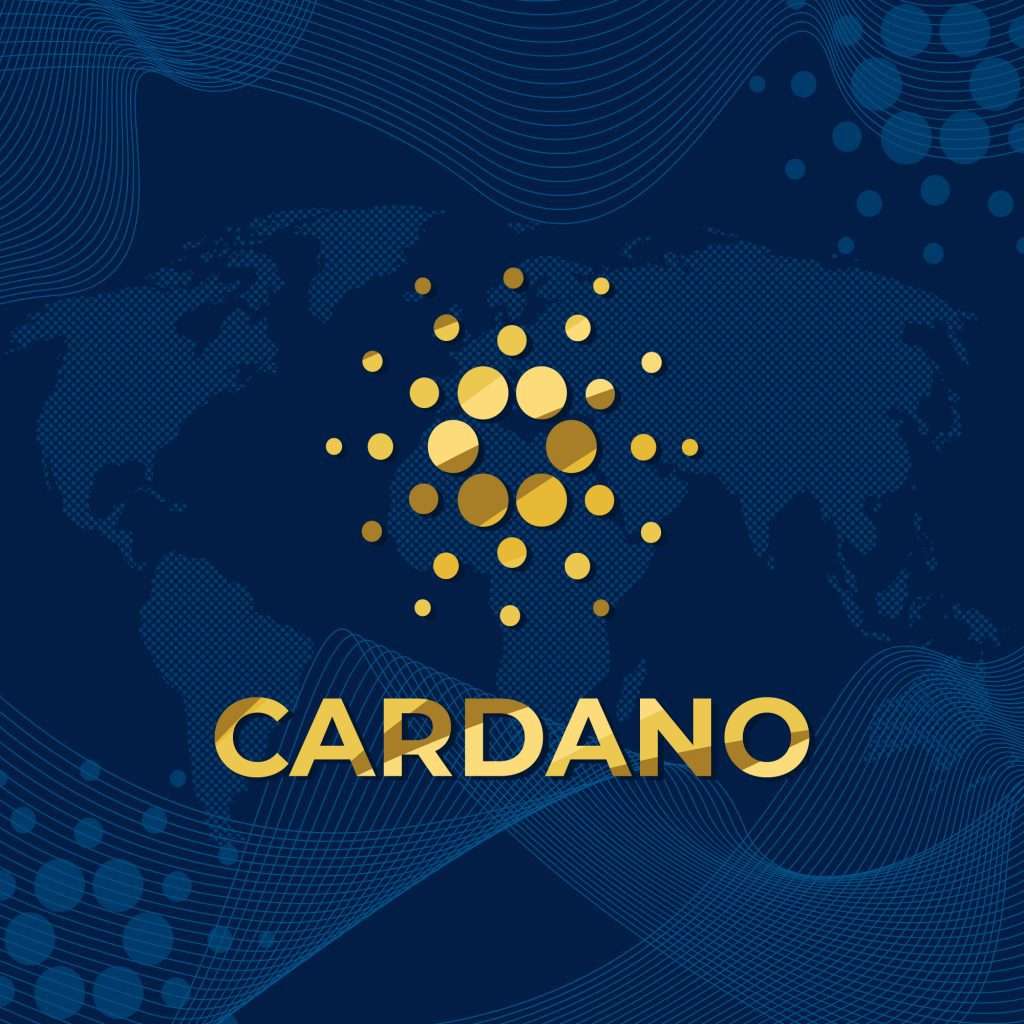Your cart is currently empty!
Cardano (ADA): What It Is and How It Differs From Bitcoin

Cardano (ADA) is one of the most innovative and academically driven blockchain projects in the cryptocurrency industry. Known for its scientific approach, peer-reviewed research, and layered architecture, Cardano has carved a unique space in the crypto ecosystem. While Bitcoin remains the pioneer and benchmark for digital currencies, Cardano offers a different vision — one that emphasizes sustainability, scalability, and interoperability.
From a financial astrology standpoint, the story of Cardano is equally intriguing. Every blockchain network, like every company or individual, has a “birth chart” based on its launch date and time. This chart can be studied to understand the potential strengths, challenges, and cyclical influences that may affect its market performance, adoption, and community sentiment.
What Is Cardano?
Cardano is a third-generation blockchain platform founded in 2017 by Charles Hoskinson, a co-founder of Ethereum. It aims to improve upon the limitations of earlier blockchains like Bitcoin (first generation) and Ethereum (second generation) by using a research-first approach and formal methods in its development.
Cardano operates on the Ouroboros proof-of-stake consensus mechanism, which allows ADA holders to participate in network validation by staking their coins. This design significantly reduces energy consumption compared to Bitcoin’s proof-of-work system, making Cardano more environmentally friendly.
The platform is built in two layers:
- Cardano Settlement Layer (CSL) – Handles transactions and ADA transfers.
- Cardano Computation Layer (CCL) – Manages smart contracts and decentralized applications.
How Cardano Differs from Bitcoin
1. Consensus Mechanism
Bitcoin uses proof-of-work (PoW), where miners compete to solve cryptographic puzzles, requiring significant energy and hardware. Cardano uses proof-of-stake (PoS), which is more energy-efficient and allows ADA holders to earn rewards by delegating or running stake pools.
Astrologically, Bitcoin’s PoW nature resonates with the determined, resource-heavy influence of Saturn and Capricorn energy — slow, secure, and resistant to change. Cardano’s PoS aligns more with the adaptable, forward-thinking qualities of Aquarius and Uranus — progressive, innovative, and focused on community participation.
2. Governance and Development Approach
Bitcoin’s development is guided by a loosely organized group of developers and miners, evolving gradually. Cardano’s roadmap is carefully planned, with academic research and formal verification at its core. This structured growth mirrors the influence of Virgo — analytical, detail-oriented, and systematic — in its birth chart.
3. Energy Consumption
Bitcoin’s energy use is vast and has been a point of criticism. Cardano’s PoS model drastically reduces its carbon footprint, aligning it with modern sustainability goals. In financial astrology, this resonates with Earth-sign practicality, emphasizing resource conservation and long-term stability.
4. Smart Contract Capability
While Bitcoin is primarily a peer-to-peer payment network, Cardano is designed as a platform for decentralized applications (dApps) and smart contracts, competing more directly with Ethereum. This adaptability echoes Gemini and Mutable sign traits — versatile, communicative, and able to handle multiple functions.
Financial Astrology of Cardano
Cardano’s Birth Chart
Cardano officially launched its mainnet on September 29, 2017. In astrology, this gives it a Libra Sun, emphasizing balance, fairness, and partnership. Libra’s influence suggests that Cardano’s growth is closely tied to its ability to form alliances, build a harmonious community, and maintain a reputation for fairness in governance.
Key natal placements (based on 12:00 PM UTC):
- Sun in Libra – Partnership-oriented, diplomatic, focused on fairness.
- Moon in Gemini – Quick adaptation to trends, strong communication with its community.
- Mercury in Virgo – Analytical and research-driven approach to development.
- Mars in Virgo – Persistent, detail-oriented execution of plans.
Planetary Transits and Market Behavior
- Jupiter Transits – Often coincide with major upgrades or partnerships. For instance, Jupiter in Aquarius (2021) aligned with increased staking activity and ecosystem expansion.
- Saturn Transits – May bring regulatory challenges or slower growth phases.
- Uranus Transits – Tend to align with technological breakthroughs or sudden shifts in market perception.

Mythological Parallels
Astrology often draws on mythology for interpretation, and Cardano’s focus on balance and justice mirrors the scales of Libra — a symbol of fairness, order, and equality. Just as the goddess Themis represents law and moral order, Cardano’s mission is to bring structured governance and equitable access to blockchain technology, particularly in developing nations where banking infrastructure is limited.
Comparative Astrology: Bitcoin vs Cardano
Bitcoin’s launch date (January 3, 2009) places its Sun in Capricorn, giving it a disciplined, enduring, and conservative growth path. Cardano’s Libra Sun creates a more relationship- and cooperation-oriented growth style.
Bitcoin’s fixed, slow evolution contrasts with Cardano’s adaptable and collaborative nature. This astrological difference mirrors their technological paths: Bitcoin as a rock-solid store of value, Cardano as a flexible, evolving platform for innovation.
Why This Matters to Investors and Traders
From a purely technical standpoint, Cardano offers different benefits than Bitcoin — faster transactions, lower energy usage, and a focus on decentralized governance. From a financial astrology angle, the timing of market entries and exits can be enhanced by studying transits to Cardano’s natal chart.
For example:
- A favorable Venus transit to Cardano’s Sun could align with positive sentiment and price appreciation.
- A challenging Mars transit could bring network disputes or market volatility.
Cardano’s Phased Roadmap and Astrological Themes
Cardano’s development follows a five-phase roadmap: Byron, Shelley, Goguen, Basho, and Voltaire. Each phase focuses on a different aspect of the network’s evolution — from foundational infrastructure to full governance capabilities.
Astrologically, these phases align with different planetary energies. Byron (foundation) resonates with Saturn’s discipline, Shelley (decentralization) reflects Uranus’s freedom-loving nature, Goguen (smart contracts) channels Mercury’s intellectual energy, Basho (scalability) aligns with Jupiter’s expansion, and Voltaire (governance) echoes the transformative power of Pluto. Viewing these phases through planetary symbolism offers insight into how and when each milestone might manifest most successfully.
Cardano’s Community and Libra Influence
Cardano’s Libra Sun gives it a unique edge in the crypto space — it thrives on diplomacy, partnerships, and consensus-building. The project has an unusually strong focus on community-driven decision-making, reflected in its governance system that will eventually allow ADA holders to vote on proposals. Libra’s emphasis on fairness and balance is evident in Cardano’s careful, measured approach to technology releases, often delaying launches to ensure quality over speed.
This diplomatic energy also influences how Cardano navigates competition. Instead of positioning itself as an aggressive rival to Bitcoin or Ethereum, Cardano often frames itself as complementary — a sign of its Libra desire for harmony.
Astrological Triggers for Cardano’s Major Price Moves
Historical price analysis shows that Cardano often experiences momentum during:
- Venus transits to its Sun — these bring favorable public sentiment and increased interest from retail investors.
- Jupiter aspects to its Mercury or Mars — often aligning with technological announcements or major conferences.
- Eclipses falling in Aries or Libra — these can bring turning points in partnerships, governance updates, or ecosystem expansion.
Conversely, challenging Saturn aspects sometimes coincide with periods of consolidation or stricter regulatory discussions, which may slow Cardano’s growth temporarily.
Symbolic Differences Between Cardano and Bitcoin
Beyond the obvious technological contrasts, there’s symbolic meaning in how each blockchain approaches its mission. Bitcoin’s Capricorn Sun reflects a “preserve and protect” mindset, treating change cautiously to ensure security and trust. Cardano’s Libra Sun signals a desire to mediate, negotiate, and create systems that feel fair for all participants.
In practical terms, this means Bitcoin moves slowly, prioritizing security over innovation, while Cardano is willing to adopt new models if they enhance equity and collaboration. This philosophical difference is as much an astrological distinction as it is a technological one.
Technical and Astrological Comparison of Cardano vs Bitcoin
| Feature / Aspect | Cardano (ADA) | Bitcoin (BTC) | Astrological Symbolism |
|---|---|---|---|
| Launch Date | 29 September 2017 | 3 January 2009 | Birth chart sets unique cosmic cycles for each |
| Sun Sign | Libra – Focused on balance, fairness, and partnerships | Capricorn – Structured, disciplined, and enduring | Libra seeks harmony; Capricorn seeks longevity |
| Consensus Mechanism | Proof-of-Stake (Ouroboros) – energy-efficient, inclusive | Proof-of-Work – energy-intensive, highly secure | PoS = Venus/Mercury adaptability; PoW = Saturn persistence |
| Primary Use Case | Smart contracts, dApps, governance | Digital currency, store of value | Libra versatility vs. Capricorn focus |
| Governance | On-chain voting system with community participation | Off-chain developer and miner consensus | Libra’s diplomacy vs. Capricorn’s conservatism |
| Energy Consumption | Very low – eco-friendly approach | Very high – large carbon footprint | Earth-conscious Libra vs. resource-heavy Capricorn |
| Market Personality | Flexible, strategic partnerships, research-led upgrades | Conservative, slow to change, security-driven | Mutable influence vs. Fixed Earth stability |
| Astrological Strengths | Venus transits bring public attention, Jupiter transits expand adoption | Saturn transits reinforce trust, Uranus shocks bring volatility | Reflects natal chart patterns |
| Astrological Challenges | Saturn aspects may slow governance decisions, Mercury retrogrades cause delays | Pluto aspects test resilience, eclipses may trigger volatility | Both face periodic cosmic stress |
Long-Term Forecast for Cardano Using Financial Astrology
Looking ahead, transits of Pluto into Aquarius in the mid-2020s could strongly favor blockchain projects that emphasize decentralization and community governance — two of Cardano’s strengths. As Uranus continues moving through Taurus, we may see more integration of blockchain with finance and sustainability, which aligns with Cardano’s energy-efficient PoS model.
By the time Neptune enters Aries, projects with strong vision and adaptability may gain further momentum, and Cardano’s Libra Sun may help it remain a central player by forging strategic alliances rather than fighting for dominance.
Conclusion
Cardano is more than just another cryptocurrency; it is a carefully designed platform with unique technical and philosophical foundations. While Bitcoin remains the dominant digital currency and a store of value, Cardano represents the next stage of blockchain evolution with its sustainable, research-driven approach.
Financial astrology adds another layer to understanding Cardano’s market behavior, showing that cosmic timing, just like network fundamentals, can play a role in shaping its trajectory. By combining blockchain knowledge with astrological insight, traders and investors can gain a richer perspective on when Cardano might thrive and when it might face challenges.
Explore more:

Mr. Rajeev Prakash
Rajeev is a well-known astrologer based in central India who has a deep understanding of both personal and mundane astrology. His team has been closely monitoring the movements of various global financial markets, including equities, precious metals, currency pairs, yields, and treasury bonds.
